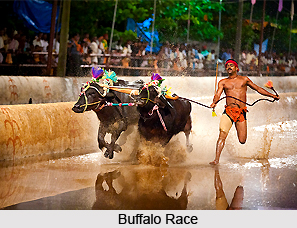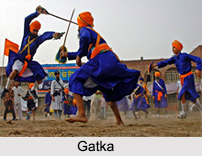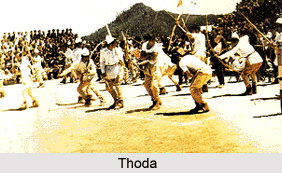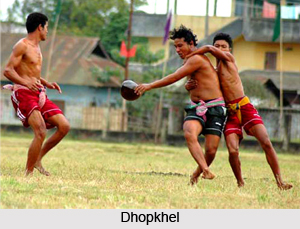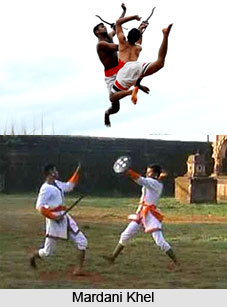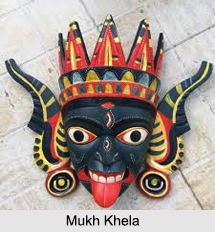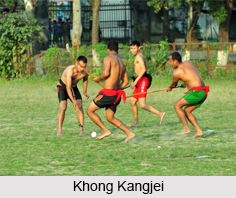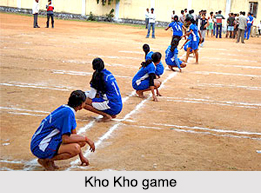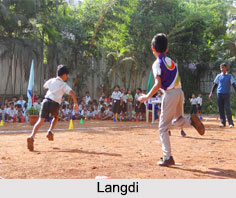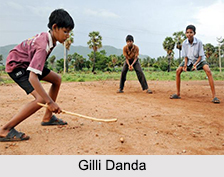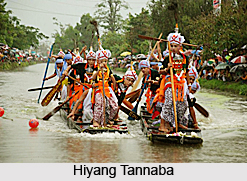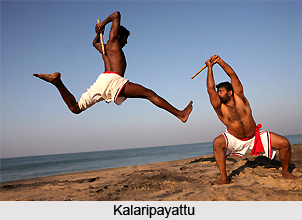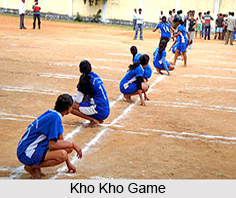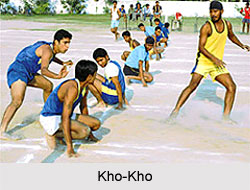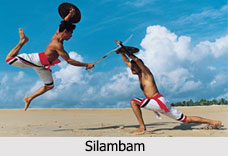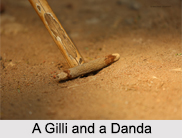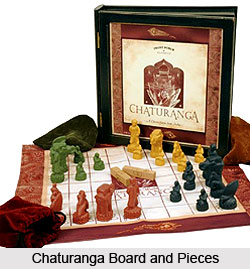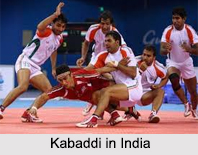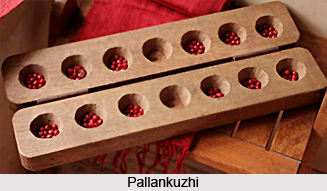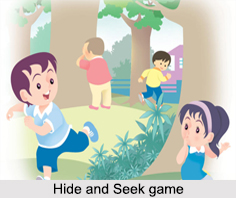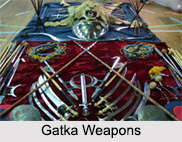 Weapons used in Gatka are a crucial part of the game. Below are the lists of some of the important weapons or Shastars that are used in Gatka. The weapons in Gatka were used during the warfare in medieval era.
Weapons used in Gatka are a crucial part of the game. Below are the lists of some of the important weapons or Shastars that are used in Gatka. The weapons in Gatka were used during the warfare in medieval era.
Barcha
This weapon is actually a spear. It is long shafted weapon and possesses a hook at the spearhead used to pull away the shield of opponent.
Chakram
This weapon is actually is a flat steel ring, with a diameter of five to 12 inches, from half an inch to an inch and a half wide, and with a sharp outer edge. While this weapon is not being used, it is carried "fixed" to the Turban. Different types of sizes are carried on a pointed turban called "Dastar Ungaa" or behind the back. It is held between the index finger and thumb, and thrown towards the opponent with underarm flick. If it is thrown with proper accuracy and force, then it has the potential to cut off green bamboo three quarters of an inch in diameter at a distance of thirty yards.
Dahl
This weapon is mainly used as shield from the strikes of opponent. It is always round in shape and differs in diameter from about eight inches to about twenty-four. Some of the structures of dahl are flat while some are strictly convex. The edges may be rolled back in the reverse curvature of shield or outright flat. It is mainly held with two handles fastened to ring that pass through shield and are wrapped to bosses on the outside, sometimes formed to spikes. In between the handles there is a square cushion for knuckles to rest against. The handles are placed in a proper manner, so when tightly grasped, they force the backs of fingers against the cushion giving a very comfortable and firm hold. These shields are nearly always of steel or leather.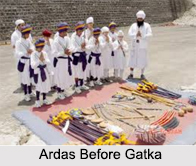
Gurj or Mace
The maces made in India have great variations in their sizes and shapes. The structure of this type of weapon is indeed very simple. Some of them are inspired from Persian styles with opening in the head that provides a whistling sound when blows are struck to plane massive heads.
Katar
The Katar is a special type of dagger weapon with double-edged and straight blade used to pierce or slice armour. In order to provide good grip and protection the handle has two sidebars.
Khanda
This is a typical Indian sword and has a broad, straight blade, mainly widening towards the pointed part, which is blunt. Now and then it is also double-edged.
Kirpan
The Kirpan is a short curved dagger and all Sikhs are required to carry it by tradition.
Lathi
The quarterstaff or lathi is actually a wooden stick as tall as the warrior and made of oak.
Marati- Training Device
The Marati is actually a stick made of bamboo with cloth or wooden balls on its ends. This weapon is principally used for training purposes. There are also differences with burning cloths or blades on its ends, to attack and also distract elephants for psychological warfare.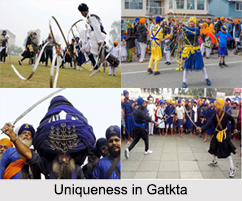
Soti
This particular weapon is manufactured from rattan or fire hardened bamboo. The length of the weapon is 1m and typically has a hand guard. It is largely useful for playing Gatka, (training fight) and for practicing the same. For fight they were replaced by sticks of oak ore ironwood, with no hand guards.
Tapar
The battle-axe is incredibly distinctive from the regular axe and occasionally has a dagger covered in the handle.
Talwar
The sword is typically bent with a sharp and thin blade. This weapon is treated with extreme care and greatly respected.
Tir Kaman
The arrow and bow is a traditional but potent weapon. The bow is composite in form and made of layers of steel and wood, and the arrow is made of steel heads with reed shafts.
Chakar
This weapon, Chakar, resembles a wagon wheel with the weights at the end of each spoke. Chakar is wielded by grasping the centre and spinning it around, causing harm to anyone coming very close to spinning weights.
Forms in Gatka
Forms in gatka are referred to as "yudha". Most gatka schools in India make use of mainly freestyle routines each governed by particular principles rather than the preset forms of other systems. There are altogether ten yudhan which, when taken as a whole, collect all the techniques and strategies of gatka. The first six forms imitate animals and are grouped under Khat Ang Yudhan meaning "six parts" or "six limbs". The seventh form collates the previous six into a seamless whole. The final forms are based on deities and are grouped as "Deva Ang Yudhan" meaning "limbs of the Gods".
